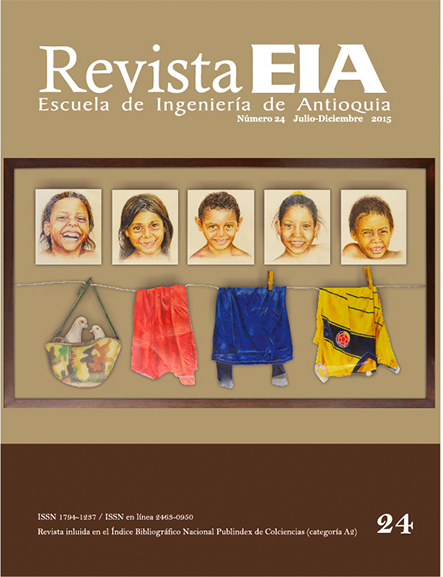PROPIEDADES FÍSICAS Y SENSORIALES DE UN PAN FRESCO, CON LA ADICIÓN DE LAS ENZIMAS LACASA, XILANASA Y LIPASA
PROPIEDADES FÍSICAS Y SENSORIALES DE UN PAN FRESCO, CON LA ADICIÓN DE LAS ENZIMAS LACASA, XILANASA Y LIPASA


This work is licensed under a Creative Commons Attribution-NonCommercial-NoDerivatives 4.0 International License.
Copyright statement
The authors exclusively assign to the Universidad EIA, with the power to assign to third parties, all the exploitation rights that derive from the works that are accepted for publication in the Revista EIA, as well as in any product derived from it and, in in particular, those of reproduction, distribution, public communication (including interactive making available) and transformation (including adaptation, modification and, where appropriate, translation), for all types of exploitation (by way of example and not limitation : in paper, electronic, online, computer or audiovisual format, as well as in any other format, even for promotional or advertising purposes and / or for the production of derivative products), for a worldwide territorial scope and for the entire duration of the rights provided for in the current published text of the Intellectual Property Law. This assignment will be made by the authors without the right to any type of remuneration or compensation.
Consequently, the author may not publish or disseminate the works that are selected for publication in the Revista EIA, neither totally nor partially, nor authorize their publication to third parties, without the prior express authorization, requested and granted in writing, from the Univeridad EIA.
Show authors biography
El objetivo de la presente investigación fue evaluar algunas propiedades físicas y sensoriales de un pan elabora- do con la combinación de las enzimas lacasa, xilanasa y lipasa, con el fin de proponer un producto panificable sin aditivos químicos. La metodología incluyó la determinación del volumen, volumen específico y análisis de características internas del pan como color de miga según la Norma IRAM 15858-1. El análisis sensorial se realizó mediante una prueba triangular compuesta por 38 jueces no entrenados, las diferencias significativas de los resultados se analizaron mediante las tablas Bengtsson’s con un nivel de significancia del 95 %. Como resultado principal se obtuvo que el volumen de los panes obtenidos con las diferentes formulaciones varió entre 4,76 cm3 y 7,84 cm3, en tanto que el volumen especifico obtenido para la formulación de un pan compuesto por lacasa-xilanasa-lipasa fue de 5,23 cm3/g. En cuanto al análisis sensorial, no reportó diferencias significativas la aceptabilidad del pan formulado en esta investigación versus un pan con aditivos químicos tradicionales. Se puede concluir que la combinación de las tres enzimas utilizadas dio un lugar a un panificado con características propias del producto.
Article visits 572 | PDF visits 385




